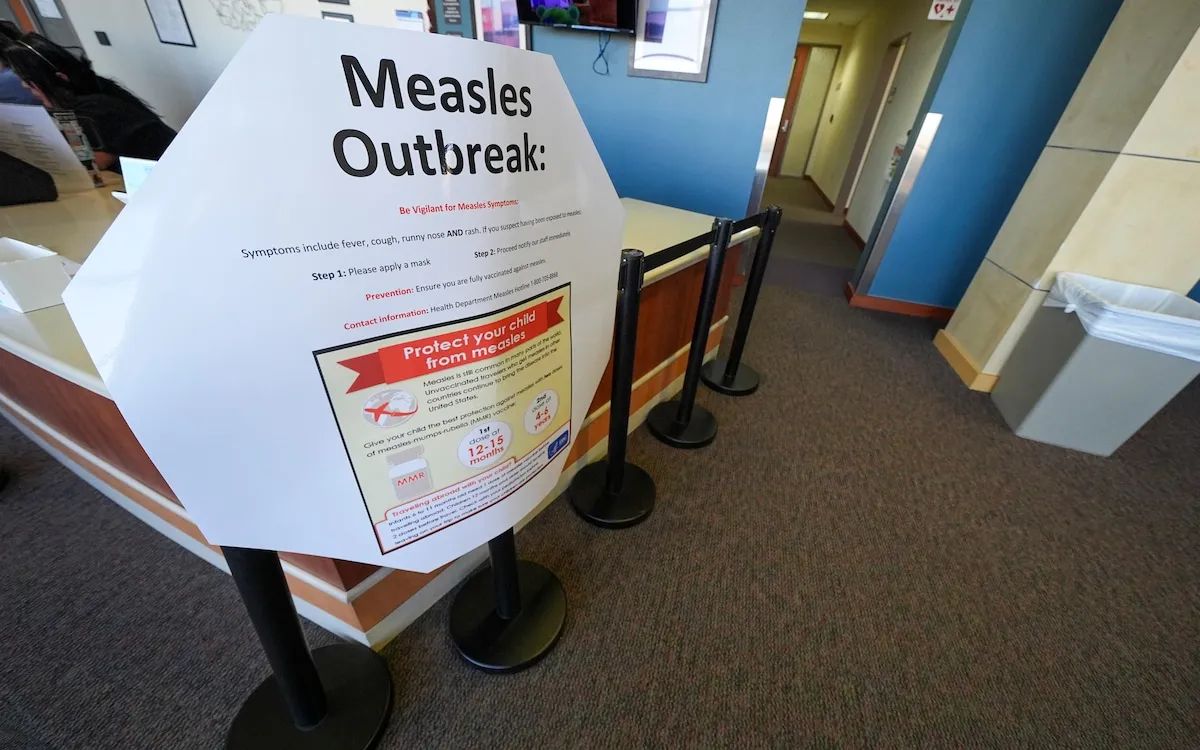
As of Friday, U.S. measles cases have surpassed 700, marking a significant increase as the nation grapples with multiple outbreaks. Indiana has joined five other states experiencing active outbreaks, while Texas reported an alarming rise of 60 new cases. Tragically, the week also saw the confirmation of a third measles-related death. During a televised Cabinet meeting on Thursday, Health Secretary Robert F. Kennedy Jr. stated that measles cases appeared to be plateauing nationally; however, the virus continues to spread predominantly among unvaccinated individuals. In response, the U.S. Centers for Disease Control and Prevention (CDC) has redeployed a team to West Texas to assist in containing the outbreak.
In 2024, the U.S. recorded more than double the number of measles cases compared to the previous year, with Texas accounting for the majority of infections—541 cases to be exact. Among these cases are two unvaccinated elementary school-aged children who tragically lost their lives due to measles-related complications in rural West Texas, prompting Kennedy's visit to the affected community. The third fatality was an unvaccinated adult in New Mexico. Other states experiencing notable outbreaks include New Mexico, Indiana, Kansas, Ohio, and Oklahoma.
Measles is a highly contagious viral infection that spreads easily through the air when an infected person breathes, sneezes, or coughs. It is preventable through vaccination and was declared eliminated in the U.S. in 2000. However, the current multistate outbreak highlights health experts' concerns that the virus could establish itself in communities with low vaccination rates, potentially prolonging the spread for up to a year. The World Health Organization has linked cases in Mexico to the ongoing outbreak in Texas.
Texas' outbreak began in late January, with state health officials reporting 36 new cases since Tuesday, bringing the total to 541 across 22 counties. Notably, 56 Texans have been hospitalized throughout this outbreak. As of Friday, state officials estimate that about 5% of confirmed cases are actively infectious. Gaines County, home to a population of 22,892, accounts for 65% of Texas’ cases, with 355 reported since the outbreak's onset. Last week's death involved an 8-year-old child, who succumbed to measles pulmonary failure, according to Kennedy. A previous death in February involved a 6-year-old.
New Mexico confirmed two new cases on Friday, raising its total to 58, with most cases linked to the Texas outbreak through genetic testing. Lea County has reported the highest number of infections, while two individuals have been hospitalized. The state recorded its first measles-related death in an adult on March 6, further emphasizing the seriousness of the situation.
Kansas reported 32 cases across eight counties, with significant clusters in Finney and Ford counties. The first case, linked to the Texas and New Mexico outbreaks, was identified on March 13. Meanwhile, Oklahoma has recorded a total of 12 cases, including nine confirmed and three probable cases, all associated with the recent outbreaks. In Ohio, the Department of Health confirmed 20 cases, primarily concentrated in Ashtabula and Knox counties. The outbreak in Ohio began with an unvaccinated adult who had traveled internationally.
In Indiana, health officials confirmed six connected cases of measles in Allen County. Four of the cases involve unvaccinated minors, while the vaccination status of the two adults remains unknown. The first case was identified earlier this week.
Measles cases have also been reported in states including Alaska, Arkansas, California, Florida, Georgia, Hawaii, Kentucky, Maryland, Michigan, New Jersey, New York, Pennsylvania, Rhode Island, Tennessee, Vermont, and Washington. According to the CDC, outbreaks are defined by three or more related cases, and as of Friday, seven clusters have qualified as outbreaks in 2025. The majority of cases trace back to international travel.
The most effective way to prevent measles is through the measles, mumps, and rubella (MMR) vaccine. The CDC recommends the first shot for children aged 12 to 15 months and a second shot between 4 and 6 years old. Adults who are at high risk of infection or living in outbreak areas may consider getting a booster shot if their initial vaccinations were administered many years ago. Generally, adults with documentation of adequate vaccination or past infection do not require additional vaccinations.
Measles typically begins as a respiratory infection, presenting symptoms such as a high fever, runny nose, cough, red eyes, and a distinctive rash. The rash usually develops three to five days after the initial symptoms, starting on the face and spreading to other parts of the body. Although most children recover, measles can lead to severe complications, including pneumonia, blindness, and even death.
Currently, there is no specific treatment for measles; healthcare providers focus on alleviating symptoms and preventing complications. Maintaining high vaccination rates is crucial to stop the spread of this highly contagious virus. Communities with vaccination rates above 95% can achieve herd immunity, making it difficult for diseases like measles to circulate. However, vaccination rates have declined nationally since the pandemic, leading to a resurgence of preventable diseases.